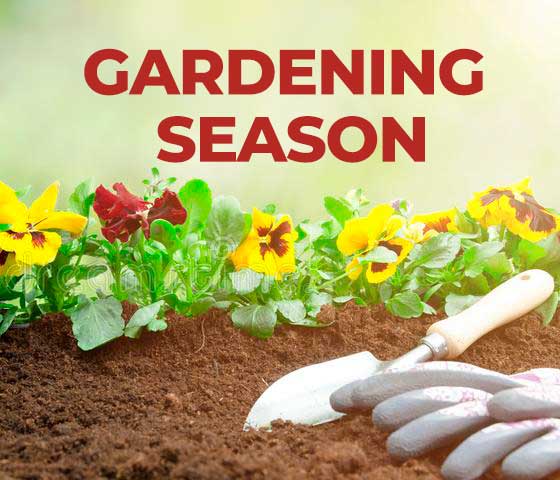If you look out the window today you’ll slowly start to see that the days are getting longer, the days seem brighter and warmer, while birds and animals are quietly becoming more vocal and active. Spring is here!
As predictable as the greening of the grass and the blooming of the spring flowers, physiotherapists around the world prepare for something that appears like clockwork the same time year after year with the changing of winter to spring…back pain and gardening season.
The end result of gardening season is always beautiful and lovely to look at however the road that some of us use to get there may not always be pleasant.
Whether it’s working with that massive “big bag of dirt”, pulling those pesky dandelions or just simply pruning flowers or transferring bulbs to flower pots, people always seem to develop some type of lower back pain or discomfort that may delay their spring projects or sideline them all together.
While the therapists at Revolve Physiotherapy would be happy to address any injuries or pains brought on by an over eager green thumb, we would love nothing more than you have an injury free gardening season.
Important things:
One of the most important things that can help prevent injury and avoid seeing us in clinic is knowledge.
Injuries to the structures of the back (disks, joints, ligaments, soft tissue) can occur as a result of acute trauma (eg lifting a heavy bag of fertilizer) or prolonged strain to joints or soft tissue (eg. staying in a bent position while weeding). This can result in a painful inflammatory response or damage to pain sensitive structures.
These types of injuries can happen at any time, but specifically when it comes to spring time gardening, injury can occur due to one or a combination of the following factors:
Poor body mechanics:
One of the most common causes of lower back pain is as a result of working with bad or poor body mechanics. Whether someone is lifting with a rounded back or with straight legs, doing a task with a less than ideal body can result in an acute trauma and injury. Some important things to consider when it comes to body alignment:
- Bend at the knees
- Hold the tummy muscles tight
- Keep the weight close to you
- Move with purpose and avoid sudden rapid movements
- Staying in one position for too long
Kneeling on the ground for 20-30 minutes planting flowers, as an example may not seem like an excessively physical activity but sustaining any position may challenge the structural endurance and integrity of tissues if held for longer periods risking injury.
One of the most important things to keep in mind when you have to undertake a time intensive activity is to “move before it hurts”.
When one has to move because of pain, there is a good possibility that an injury has already started. A good rule of thumb is to change your working position. For example, every 10-15 minutes to take frequent breaks throughout the time you are working.
No warm up
Not warming up prior to doing yard or garden work may result in the same types of lower back injuries that one would expect if someone were to play a sport without warming up.
A proper warm up period (incorporating a short cardiovascular period combined with an appropriate selection of exercises) helps to prepare tissues and muscles. As a result, directing blood flow to involved areas, increasing flexibility to soft tissues and increasing mobility within the spinal joint areas.
Try these exercises before your next gardening session:
- Jefferson curl/roll downs
- Standing lumbar extensions
- Hip CARS
- Sumo squats
- Neck stretches
- Quad stretches
- Transverse abdominus
Poor posture can contribute to lower back pain when muscles are forced to work in a manner that is not ideal resulting in excess strain on structures within the back and spine.
Slouching or working in a bent position are perfect examples of this. To help maintain better working postures, try keeping the following points in mind when performing these common tasks:
Raking:
- Use a rake suited to your height
- Keep the work and rake close to your body
- Avoid rapid twisting
- Have a comfortable back alignment
- Take breaks
Weeding/planting
- Don’t bend from the waist
- Squat, kneel or sit on the ground
- Use appropriately sized tools
- Use knee pads to avoid knee pain
- Consider building a potting or planting bench
Digging or shovelling
- Lift small amounts at a time
- Bend at the knees
- Avoid aggressive twisting or a rounded back
- Use your core muscles
- Use a wheel barrow for larger loads
- Take breaks
- Use a smaller shovel head to prevent lifting larger loads
Well that’s it. The simple things to keep in mind during gardening season, is to work smarter not harder and pace yourself. Your entire list doesn’t have to get done today.
If you have any questions or need an assessment.
Give us a call or Book online below
